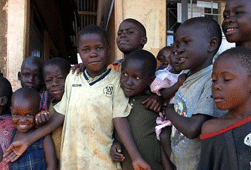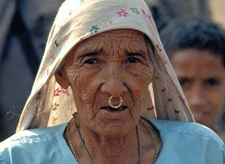About Refugees

Group of young African children
Who is a refugee?
According to the 1951 United Nations Refugee Convention, a refugee is defined as someone who “owing to a well-founded fear of being persecuted for reasons of race, religion, nationality, membership of a particular social group, or political opinion, is outside the country of his nationality, and is unable to or, owing to such fear, is unwilling to avail himself of the protection of that country…”
- Asylum seekers have submitted a claim for refugee status and are waiting for this claim to be accepted or rejected.
- Refugees and asylees comprise the majority of displaced persons resettled to the United States.
What are the top countries of origin and asylum*?
The top ten countries of refugee origin are Afghanistan, Iraq, Somali, DR Congo, Myanmar, Colombia, Sudan, Vietnam, Eritrea, and China.
The top ten countries of refugee asylum are Pakistan, Iran, Syria, Germany, Jordan, Kenya, Chad, China, United States, and United Kingdom.
* Countries are listed in order from greatest to least number of refugees as of Dec 2010.
Source: UNHCR Global Trends (2010)
Statistics on International Refugees and US Domestic Refugee Admissions:
Source: UNHCR, 2009 Global Trends: Refugee, Asylum-Seekers, Returnees, Internally Displaced and Stateless People
- As of 2009, an estimated 15.2 million refugees were located around the world. Of these refugees, 251,500 were voluntarily repatriated to their home nations.
- In 2011, the United States accepted 56,424 refugees for resettlement.
Source: U.S. Department of State, Bureau of Population, Refugees, and Migration (PRM), Worldwide Refugee Admissions Processing System (WRAPS)
The U.S. has projected a refugee resettlement ceiling of 76,000 individuals for FY 2012.
Source: Presidential Determination No. 2011-17: FY 2012 Refugee Admissions Numbers
Immigrant, Refugee and Migrant Health Branch (IRMH)
The goal of the IRMH Branch within the Division of Global Migration and Quarantine is to promote and improve the health of immigrants, refugees, and migrants and prevent the importation of infectious diseases and other conditions of public health significance into the U.S. by these groups. To accomplish this goal the IRMH branch plays a significant role in refugee health, both overseas and domestically.

Overseas
- IRMH develops and implements the Technical Instructions used by overseas panel physicians who are responsible for conducting the medical examinations for U.S.-bound refugees. The Technical Instructions consist of medical screening guidelines, which outline in detail the scope of the medical examination. The purpose of the medical examination is to identify, for the Department of State and the US Citizenship and Immigration service, applicants with medical conditions of public health concern.
- IRMH also maintains an anonymous collection of surplus blood samples from overseas screenings called the Migrant Serum Bank (MSB). Scientists from around the world can request to use the samples for research projects.
Domestic
- The Domestic Refugee Health Program facilitates collaboration with state and local health department partners to improve the health care and monitor medical conditions of refugees after their arrival into the United States.
- IRMH also maintains the Electronic Disease Notification System (EDN), which notifies states and local health departments of the arrival of refugees to their jurisdictions. EDN provides states with overseas medical screening results and treatment follow-up information for each refugee.
IRMH Partners
To accomplish its goals in refugee health, IRMH works with many external partners:
- U.S. Department of State
- International Organization for Migration
- United Nations High Commissioner for Refugees
- U.S. Office of Refugee Resettlement
- U.S. Bureau of Population, Refugees, and Migration
- World Health Organization
- State and Local Health Departments
- Voluntary Agencies
- Page last reviewed: March 27, 2012
- Page last updated: March 27, 2012
- Content source:


 ShareCompartir
ShareCompartir